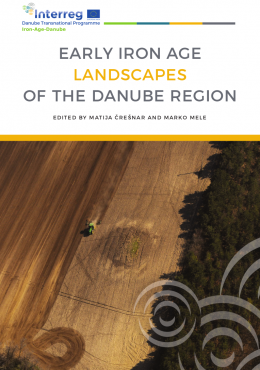Early Iron Age Landscapes of the Danube Region

Early Iron Age Landscapes of the Danube Region
| 0 Ft |
| Price |
Project: Iron-Age-Danube
Budapest, Archaeolingua, 2019
Keménytábla | Hardcover
240 oldal, színes és fekete-fehér illusztrációkkal | 240 pages with colored and grayscale images
ISBN 978-615-5766-33-6
The book is available as pdf on the project’s website.
If you would like a printed copy, please contact us at info@archaeolingua.hu.
Table of Contents // Tartalomjegyzék
Description
Connecting European archaeological heritage to wider transnational networks has gained significant attention in the past decades, and has become a vital tool for heritage protection, promotion and touristic use. This book summarizes the outcome of the Iron-Age-Danube project (full title “Monumental Landscapes of the Early Iron Age in the Danube Basin”), initiated in 2017 by 20 partners from five countries across the Danube region, and financed within the framework of the Interreg Danube Transnational Programme.
The project aimed to explore the rich archaeological heritage of the Early Iron Age in the Danube region, i.e. the monumental archaeological landscapes, hilltop settlement and tumulus cemeteries from the Hallstatt Period, using modern archaeological methods. The project’s major innovation is the methodological shift of dealing with complex prehistoric landscapes rather than individual sites. The studies in this book explore prehistoric land use, settlement dynamics, and tumulus cemeteries on a micro-regional scale, contributing to a better understanding of past landscapes as well as the potentials and limitations of cutting-edge technologies in archaeological research.
Table of contents
Foreword
1. Settlement dynamics in the Sulm valley (Austria, Styria) –new results of the Iron-Age-Danube project. Anja Hellmuth Kramberger, Marko Mele and Daniel Modl.
2. Landscape-studies of the micro-region Strettweg (Aichfeld/Murboden) in Austrian Styria in the framework of the Iron-Age-Danube project- Susanne Tiefengraber and Georg Tiefengraber.
3. Architecture of power or demise: Gigantic burial mounds of Podravina as parts of the Early Iron Age landscape. The Iron-Age-Danube project in the Plitvica-Bednja rivers basin (NW Croatia). Saša Kovačević.
4. Study of the Kaptol micro-region. Hrvoje Potrebica and Marta Rakvin.
5. Before and after: investigations of prehistoric land use in relation to the Early Iron Age settlement and tumulus necropolis on the Érd/Százhalombatta-plateau. Zoltán Czajlik, Eszter Fejér, Katalin Novinszki-Groma, László Rupnik, András Bödőcs, Rebeka Gergácz, Balázs Holl, András Jáky, Géza Király, Gabriella T. Németh, Sándor Puszta and Bence Soós.
6. Traces of prehistoric land use on the Süttő plateau. Zoltán Czajlik, Eszter Fejér, Katalin Novinszki-Groma, András Jáky, László Rupnik, F. Zsófi a Sörös, András Bödőcs, Péter Csippán, Gabriella Darabos, Rebeka Gergácz, Dorottya Györkös, Balázs Holl, Géza Király, Dóra Kürthy, Boglárka Maróti, Mónika Merczi, Máté Mervel, Balázs Nagy, Sándor Puszta, Szilvia B. Szöllősi, Bíborka Vass and Szabolcs Czifra.
7. Early Iron Age cultural landscapes: case studies from the Poštela and Cvinger (Eastern Slovenia). Dimitrij Mlekuž and Matija Črešnar.
| |
|
|
1067 Budapest, Teréz krt. 13. |
|
|
|
|
About us
The Archaeolingua Foundation and Publisher is involved in publishing series and standalone publications in the disciplines of archaeology, linguistics, historic sciences and heritage protection for over 25 years.
Learn more
Publishing
We publish both as standalone editions and as a volume of a professional series.
Learn more
Contact us
Archaeolingua Foundation

